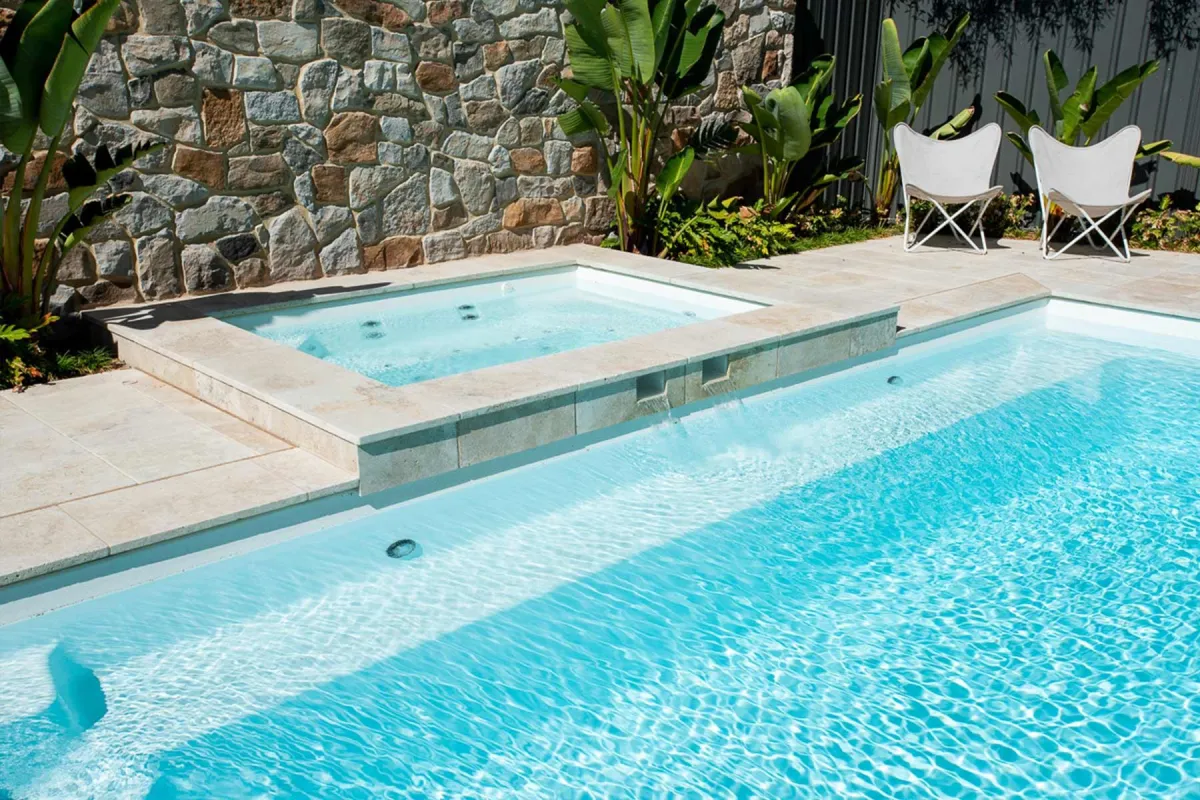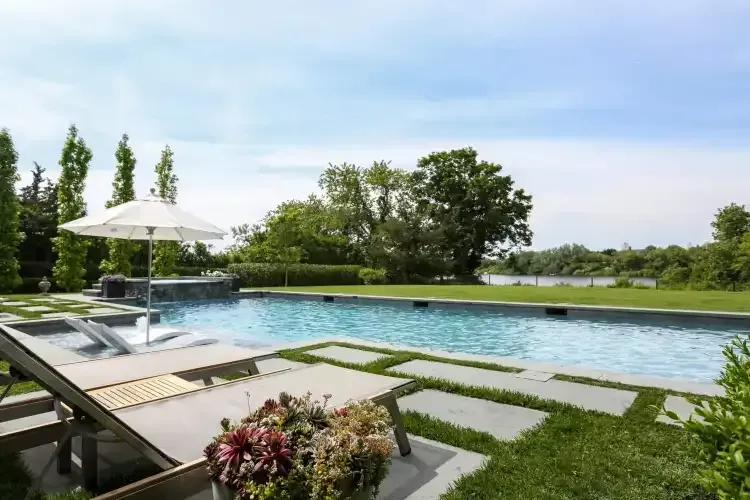
Mastering Hamptons Pool Installation Rules: Permits, Safety & Compliance in Surrounding Areas
Building a luxury pool in the Hamptons and surrounding areas requires careful attention to permits, zoning, safety barriers, and environmental regulations. From East Hampton to Southampton and beyond, homeowners must navigate local codes, setback requirements, drainage systems, and historic district standards to ensure a fully compliant, safe, and aesthetically pleasing pool. Understanding these rules from the outset helps prevent delays, avoids costly fines, and guarantees that your custom pool project meets both legal and design expectations.
What Are the Key Permit Requirements for Pools in the Hamptons and Surrounding Areas?
Constructing a pool in Southampton, Watermill, Bridgehampton, Sag Harbor, East Hampton, West Hampton, Quogue, Jamesport, Mattituck, Southold, or surrounding areas requires a building permit that complies with all local, county, and state mandates. Obtaining a permit ensures that the construction meets structural, safety, and environmental standards and prevents legal or financial complications during or after the project.
How Long Does the Pool Permit Approval Process Take in the Hamptons?
The timeline for pool permit approval varies depending on the location and complexity of the project. Typically, the initial submission review takes one to two weeks, during which departments check that all materials are complete. Technical plan examination usually lasts two to four weeks, verifying structural integrity, utility connections, and setback compliance. Environmental impact assessments take one to two weeks to ensure wetlands and stormwater management concerns are addressed. If the property is in a historic or special district, an additional two to six weeks may be required for architectural compatibility review. Final approval and permit issuance usually occur within one week after all reviews are complete.
How Much Do Pool Permits Cost in Southampton, East Hampton, and Surrounding Areas?
Permit costs depend on the size and complexity of the pool as well as the necessity of special reviews. Building permit fees are calculated based on the total project valuation and typically range from $1,200 to $3,000. Applications for zoning variances or non-standard setbacks may cost between $500 and $1,500. Environmental reviews for wetlands or tree removal can add $300 to $800, while historic architectural review fees vary from $250 to $600 per submission. Mandatory inspection fees, usually required for four to six visits, generally cost $100 to $150 per visit. Accurate documentation and thorough preparation often reduce the likelihood of additional fees due to corrections or revisions.
How Does Hiring a Licensed Suffolk County Pool Contractor Help?
Licensed contractors, such as Vitaliy Pools, simplify the permitting process by preparing all necessary surveys, plans, and reports in compliance with department standards. They maintain strong relationships with local building and environmental officials, coordinate engineers, surveyors, and arborists, and ensure adherence to Suffolk County licensing and insurance requirements. Acting as a single point of contact minimizes errors and helps streamline inspection scheduling, reducing delays and stress for homeowners.
What Are Zoning and Setback Regulations for Pools in the Hamptons?
Zoning ordinances dictate where pools can be placed relative to property lines, structures, and environmentally sensitive areas. In East Hampton, side and rear yard setbacks are typically a minimum of ten feet, and front yard setbacks are generally twenty feet. In Southampton, side yard setbacks are twelve feet, rear yard setbacks are fifteen feet, and front yard setbacks align with the primary building envelope. Accessory structures such as pool decks or equipment buildings must comply with or exceed the setback distances required for the pool shell itself.
How Do Environmental Setbacks Affect Pool Construction?
Pools located near protected wetlands must observe additional buffer zones to avoid ecological disruption. The wetlands buffer zone generally extends 100 feet from the edge of regulated wetlands. Mature trees must be preserved, and a minimum distance of fifteen feet from trunks is typically required to protect root systems. During excavation and construction, erosion and sediment control measures, including silt fencing and temporary drainage channels, are essential to prevent soil runoff and protect sensitive habitats.
When Are Zoning Variances Needed?
Zoning variances are required when the standard setback rules or lot coverage limitations cannot be met due to irregularly shaped lots, historic or environmentally sensitive districts, or when the combined area of the pool, decking, and accessory structures exceeds the allowable lot coverage percentage. Variances require a formal process that may include public notices, neighbor notifications, and hearings before the Zoning Board of Appeals, providing flexibility while ensuring compliance with legal standards.
What Are Lot Coverage Regulations in Suffolk County?
Suffolk County regulates the maximum impervious surfaces allowed on a property. The pool shell is usually limited to eight percent of the lot area, with pool decks and patios contributing to a combined maximum of twenty percent. Accessory structures such as pool houses or cabanas are generally allowed an additional five percent. Observing these limits is important for stormwater management, groundwater recharge, and regulatory compliance.
How Are Drainage and Environmental Compliance Managed?
Proper drainage is critical to protect wetlands, groundwater, and downstream ecosystems. Dry wells sized for the full pool volume are typically installed at least ten feet from foundations, and stormwater management strategies include permeable paving, rain gardens, bioswales, and sediment traps. Direct discharge of chlorinated water, untreated overflow, and debris into wetlands is strictly prohibited. Following these measures ensures environmental compliance and reduces the risk of fines.
How Do Historic District Guidelines Impact Pool Installations?
Pools in historic areas, such as Amagansett or Sag Harbor, must complement existing architecture, preserve sightlines and native landscaping, use appropriate materials, colors, and lighting, and obtain a Certificate of Appropriateness before construction begins. Minor installations like plunge pools under 100 square feet within previously developed areas may qualify for expedited approvals.
Final Thoughts
Constructing a pool in the Hamptons and surrounding areas is both an exciting and complex undertaking. By carefully navigating permits, zoning regulations, safety barriers, drainage requirements, and historic district guidelines, homeowners can ensure a smooth and compliant project. Partnering with experienced and licensed contractors like Vitaliy Pools not only streamlines the process but also guarantees a luxurious, high-quality pool that blends seamlessly with your property’s aesthetic and environmental needs. With the right planning, professional guidance, and attention to detail, your dream pool can become a stunning, safe, and enduring centerpiece for your home and outdoor living space.

Is a permit required for above-ground pools in the Hamptons and surrounding areas?
Yes, any pool deeper than 24 inches, including above-ground pools, generally requires a building permit. This ensures compliance with structural, setback, and safety requirements.
What are the typical setback requirements for pools in Southampton and East Hampton?
In Southampton, pools usually require a minimum 12-foot setback from side property lines and 15 feet from the rear. Front yard setbacks are determined by the primary building envelope. In East Hampton, side and rear setbacks are typically 10 feet, and front yard setbacks are 20 feet.
Are safety fences mandatory for all pools in New York State?
Yes, all pools exceeding 24 inches in depth must be enclosed by a climb-resistant fence at least 48 inches high, with self-closing and self-latching gates. Local variations exist, but compliance with these standards is required statewide.
Are pool alarms required in Suffolk County?
Yes, New York State law mandates audible alarms for pools deeper than 24 inches. Alarms should alert homeowners to unauthorized access, enhancing safety, especially for children and pets.
What drainage measures are required for pools in East Hampton and surrounding areas?
Pools must have compliant on-site drainage systems, such as dry wells sized to handle full pool volumes. Stormwater management practices, including permeable paving, rain gardens, bioswales, and sediment traps, are also required to protect wetlands and groundwater.
Address: 59 Kerry court
Hamptons NY 11901
Phone: 989-474-3548
Email: [email protected]
